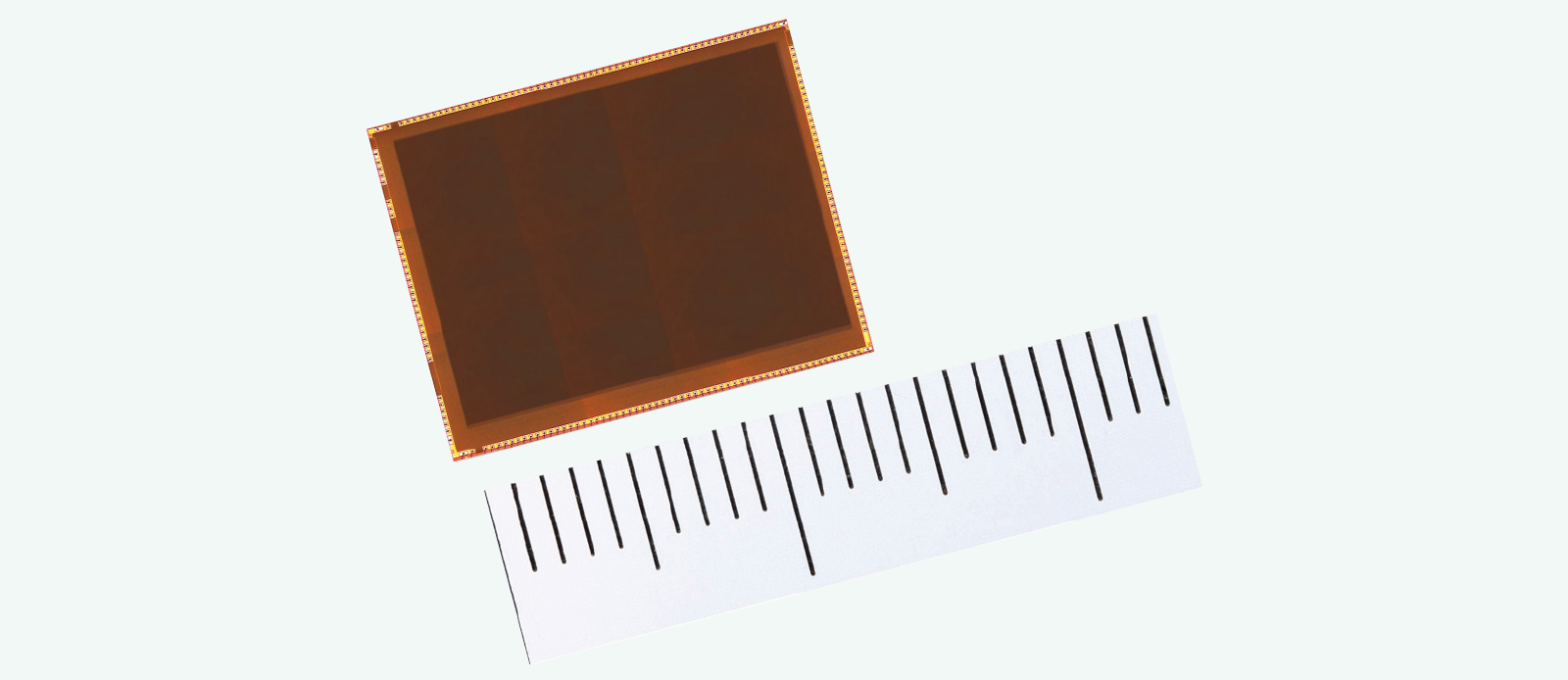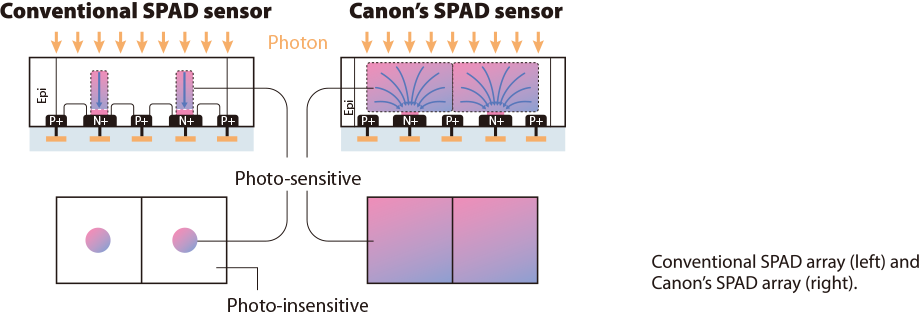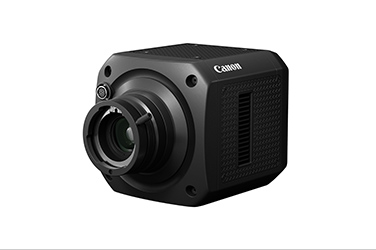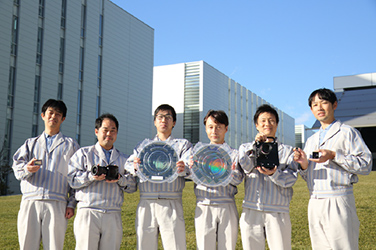

Canon Successfully Develops Key Devices for Future Society
SPAD Sensor
One of the key components that we expect to further enrich our society in the future, beyond what we see today is the sensor that coverts light into electric signals. Canon has successfully developed an ultra-small (13.2mm x 9.9mm) SPAD sensor capable of capturing the world’s highest*1 resolution 3.2-megapixel color photography—a higher resolution than full HD (approximately 2.07 megapixels), even in low-light environments.
*1 SPAD sensors for video photography use. As of July 31, 2023. Based on Canon research.
October 16, 2023
Measuring the Number of Photons, not the Amount
Single Photon Avalanche Diode (SPAD) sensor is a type of an image sensor. The term “image sensor” may brings to mind the CMOS sensors typically used in digital cameras, but SPAD sensors operate on different principles.
Both SPAD and CMOS sensors take advantage of the fact that light possesses the property of particles. While in CMOS sensors, each pixel measures the amount of light that reaches to the pixel within a given time, SPAD sensors on the other hand measure each individual light particle (i.e, photon) that reaches to the pixel. Each photon that enters the pixel immediately get converted into an electric charge, and the generated electrons are eventually multiplied as an avalanche, allowing one photon to be extracted as one electrical signal.

CMOS sensors read light as electric signals by measuring the volume of light that accumulates in a pixel within a certain time frame. This also counts the noise that enter the pixel along with the light particles (photons), hence contaminating the information received. Meanwhile, SPAD sensors digitally count individual photon particles, preventing from any analog noise to enter. This makes it possible to obtain a clear image even in dark places when there is little light, and vividly capture subjects in the darkness.
Low-light Scenes as if It Were in Bright Areas
The SPAD sensor developed by Canon employs a proprietary pixel architecture that reflects photons inside the pixel in order to effectively detect photons across the entire region of effective pixels. Under equivalent light conditions, the SPAD sensor can capture the same images as a conventional CMOS sensor while requiring only 1/10 of imaging area. This realizes an ultra-small design that can be installed even in small devices and can greatly increase sensitivity. Both static images and video images can be performed in low-light environments, including dark night conditions. By equipping cameras designed for low-light environments and other monitoring applications to this SPAD sensor, even video footage of low-light environments can be viewed as if it were recorded in bright areas, enabling identification of subject movement as though viewing with the naked eye in well-lit environments.
Achieving High Pixel Density and High-sensitivity
In conventional SPAD sensors, only photons that travel through the region covered by high electrical field (sensitivity field) can be detected, leading to a challenge which require pixel size to be shrunk and as a result, sensitivity to be lowered.
With the proprietary architecture of Canon’s SPAD sensor, the space within the sensitivity field covers the entire pixel area, allowing it to efficiently capture the charge (quantity of electricity) generated from incident photons. This makes it possible to achieve 100% fill factor, realizing both miniaturization and high sensitivity.

As a result, clear images with the world’s highest resolution of 3.2 megapixels can be captured under environments darker than starless night skies.

Color images at a resolution of 3.2 megapixels greater than Full HD
Unprecedented High-speed and High-precision Distance Measurements
Canon’s SPAD sensor has a time resolution as precise as 100 picoseconds (1/10 billion seconds), which enables extremely fast information processing. This makes possible to capture the movement of objects that move extremely fast, such as light particles. In addition to high-resolution and high-sensitivity, it is also capable of capturing light trails moving at a speed of approximately 300,000 km (7.5 times the earth’s circumference) per second.
Enables capture of slow-motion images of high-speed phenomena that occur nearly instantaneously
Source: École polytechnique fédérale de Lausanne (EPFL) and Canon Inc.
Taking advantage of these characteristics, it is expected to be used as a sensor for driverless vehicles and medical diagnostic imaging equipment, etc.
Canon has launched the world’s first*2 ultra-high-sensitivity interchangeable-lens camera equipped with SPAD sensor. When combined with an ultra-telephoto broadcast lens, it is possible to capture clear color videos of vessels several kilometers away, even at night. Not only can you discover the vessel, you can now also determine what type of vessel it is.
- *2 As a color photography camera. As of July 31, 2023. Based on Canon research.




